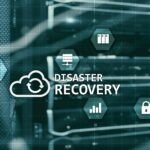Table of Contents
Introduction
The advent of cloud computing has transformed business operations, providing greater scalability, enhanced flexibility, and significant cost efficiencies. However, with these advantages comes an increasing set of security challenges. Cloud environments are prime targets for cyber threats due to the vast amounts of sensitive data stored online. In this article, we’ll explore how organizations can navigate these challenges, adopt proactive strategies, and build a secure, resilient cloud infrastructure.
Understanding Cloud Security Threats
Cloud security threats refer to vulnerabilities and risks associated with data, applications, and infrastructures operating in the cloud. Unlike traditional on-premises systems, cloud-based platforms introduce unique complexities that demand vigilant security practices. These threats range from malicious attacks to accidental misconfigurations, each posing significant risks to sensitive data.
Types of Cloud Security Threats
1. Data Breaches
Data breaches occur when unauthorized individuals access confidential information. Cloud environments, due to their vast storage capabilities, often become attractive targets. Compromised credentials, weak passwords, and poor access management are common culprits behind breaches.
2. Insider Threats
Insider threats occur when individuals within an organization abuse their access privileges. Whether intentional or accidental, insiders can expose sensitive information or compromise security protocols, leading to significant data loss.
3. Misconfiguration Risks
Misconfigurations in cloud settings are among the leading causes of vulnerabilities. For instance, leaving storage buckets open to public access can expose private data, leading to severe security incidents. Misconfigurations highlight the need for stringent management practices.
4. Denial of Service (DoS) Attacks
DoS attacks flood cloud services with excessive traffic, making them unavailable to legitimate users. Such disruptions can cause downtime, revenue loss, and reputational harm.
5. Account Hijacking
Account hijacking involves cybercriminals gaining control over user accounts. Phishing, credential stuffing, and exploiting weak passwords often lead to unauthorized access, jeopardizing entire cloud environments.
Impact of Cloud Security Threats on Businesses
The consequences of cloud security threats breaches extend far beyond technical disruptions. Financial repercussions, such as fines and lost revenue, are immediate concerns. Additionally, organizations suffer reputational damage when customer trust is eroded. Legal liabilities, especially under data protection laws like GDPR and CCPA, add further complexity, making robust security essential for compliance.
Key Cloud Security Best Practices
Implementing Strong Access Controls
Robust access control mechanisms ensure that only authorized users can access sensitive data. Implementing multi-factor authentication (MFA) adds an extra security layer by requiring additional verification beyond passwords.
Data Encryption Techniques
Encryption keeps data inaccessible to unauthorized individuals. Encrypting data both at rest and in transit significantly enhances security, protecting sensitive information even if breaches occur.
Regular Security Audits and Monitoring
Continuous monitoring and auditing help identify potential vulnerabilities before attackers exploit them. Automated monitoring systems provide real-time alerts, enhancing an organization’s ability to respond swiftly.
Leveraging Advanced Technologies for Cloud Security
Advanced technologies are pivotal in fortifying cloud environments against evolving threats. Two key innovations—AI and Security Information and Event Management (SIEM) systems—stand out for their effectiveness.
AI and Machine Learning
Artificial intelligence (AI) and machine learning are revolutionizing cloud security by analyzing large datasets to identify anomalies and potential threats in real-time. Unlike traditional security measures that rely on predefined rules, AI can learn from new patterns, continuously improving its detection capabilities. For example, AI-based tools can identify unusual login behaviors or flag suspicious file access, providing early warnings to administrators.
SIEM Systems
SIEM solutions aggregate security data from various sources, providing a centralized view of potential risks. By integrating with cloud platforms, these systems enable automated threat detection, correlation analysis, and streamlined incident response. Combined with machine learning, SIEM systems can identify complex attack patterns that manual oversight might miss.
Compliance and Regulatory Considerations
Businesses operating in the cloud must navigate a complex web of regulations to ensure data protection. Various laws dictate how sensitive information is handled, making compliance a critical component of cloud security strategies.
Key Regulations
1. General Data Protection Regulation (GDPR): Governs data privacy in the European Union, emphasizing user consent and data minimization.
2. California Consumer Privacy Act (CCPA): Enhances consumer privacy rights and data transparency in California.
3. Health Insurance Portability and Accountability Act (HIPAA): Regulates healthcare data in the United States, requiring stringent security measures.
Ensuring compliance involves implementing policies that align with these frameworks, conducting regular audits, and maintaining clear documentation. Non-compliance can result in substantial fines, making proactive management essential.
Cloud Security in Hybrid and Multi-Cloud Environments
Hybrid and multi-cloud strategies offer flexibility but also introduce unique security challenges. In these models, businesses use a combination of public and private clouds or multiple cloud providers, each with different security protocols.
Challenges
1. Data Fragmentation: Sensitive data spread across different platforms increases the risk of exposure.
2. Inconsistent Security Policies: Managing diverse environments can lead to gaps in policy enforcement.
Solutions
1. Centralized Security Management: Tools that provide a unified dashboard for monitoring and policy enforcement can simplify security.
2. Data Loss Prevention (DLP) Tools: These technologies help protect sensitive information across varied environments by monitoring data movement and preventing unauthorized sharing.
Role of Cloud Service Providers in Security
Cloud security is a shared responsibility between service providers and users. Understanding this model is crucial to ensuring comprehensive protection.
Shared Responsibility Model
1. Cloud Provider Responsibilities: Securing the infrastructure, including hardware, networking, and foundational software.
2. User Responsibilities: Managing data security, access controls, and application-level security.
Evaluating a provider’s security features, certifications, and compliance capabilities helps businesses make informed decisions. Service-level agreements (SLAs) should clearly define the provider’s security obligations to avoid misunderstandings.
Training and Awareness for Employees
Human error is one of the leading causes of cloud security incidents. Educating employees on best practices can significantly reduce risks.
Essential Training Topics
1. Recognizing Phishing Attempts: Teaching employees to spot fraudulent emails helps prevent credential theft.
2. Password Management: Encouraging the use of strong, unique passwords and password managers enhances security.
3. Secure Data Handling: Guidelines for sharing and storing data reduce the likelihood of accidental leaks.
Interactive training sessions, gamified learning, and regular security drills keep awareness high and engagement strong.
Incident Response and Recovery Planning
A well-structured incident response plan is crucial for minimizing damage when a cloud security breach occurs. Unlike traditional systems, cloud environments require dynamic, scalable recovery strategies.
Developing a Cloud-Specific Incident Response Plan
1. Identification and Containment: Detect the breach and limit its spread by isolating compromised systems or accounts.
2. Investigation: Analyze logs, security alerts, and access records to determine the root cause of the incident.
3. Mitigation and Eradication: Apply patches, revoke compromised credentials, and fix vulnerabilities to restore security.
4. Recovery: Restore data from backups and re-enable affected services after confirming the threat has been neutralized.
5. Post-Incident Review: Assess the response, document lessons learned, and update security policies to prevent future incidents.
Disaster Recovery in Cloud Environments
Disaster recovery plans for cloud infrastructure should prioritize redundancy and data availability. Regular backups, automated failover systems, and geographic replication ensure business continuity even in severe attacks or outages.
Cost-Effective Security Solutions for Small Businesses
Small businesses often face budget constraints that limit access to high-end security tools. However, many cost-effective options provide robust protection without significant financial strain.
Affordable Security Tools
1. Free and Low-Cost Security Suites: Platforms like Cloudflare offer basic protections against DDoS attacks and secure web traffic at minimal or no cost.
2. Open-Source Security Solutions: Tools like Snort for intrusion detection and OpenVPN for secure connections provide enterprise-grade features for free.
Partnering with Managed Security Service Providers (MSSPs)
MSSPs offer outsourced security management, providing small businesses with expert-level monitoring and threat response without needing in-house teams. They offer scalable, affordable options tailored to different business sizes.
Emerging Trends in Cloud Security
Staying ahead of new security trends is essential for long-term protection. Key innovations are reshaping how organizations secure cloud environments.
Zero Trust Architecture
Zero Trust principles require verifying every access request, assuming no user or device is inherently trustworthy. This minimizes the risk of internal and external breaches by enforcing continuous authentication and strict access controls.
Secure Access Service Edge (SASE)
SASE combines wide-area networking (WAN) with cloud security services. It offers a unified solution for managing secure connections across distributed systems, improving efficiency and protection for remote workforces.
Rise of DevSecOps
Integrating security into development workflows (DevSecOps) shifts security responsibilities left in the software lifecycle. Automated testing, code scanning, and continuous integration reduce vulnerabilities in cloud-native applications.
The Role of Security Policies in Cloud Adoption
Strong security policies align cloud strategies with organizational goals, creating a structured approach to risk management.
Creating Robust Policies
1. Access Management Policies: Define roles, permissions, and approval processes for accessing cloud resources.
2. Data Retention and Deletion Policies: Specify how long data is stored and the protocols for secure deletion.
3. Incident Reporting Policies: Standardize how employees report suspicious activities or breaches.
Aligning Cloud Strategies with Security Goals
Security policies should integrate with broader business strategies. For example, companies adopting multi-cloud strategies must account for inter-provider security differences and implement uniform standards across platforms.
Conclusion
Cloud security threats continue to evolve, but organizations can overcome these challenges with proactive strategies. By combining best practices, leveraging advanced technologies, and fostering a culture of security awareness, businesses empower themselves to build resilient cloud infrastructures. A strong focus on training, compliance, and innovation will pave the path to a more secure and empowered cloud future.









